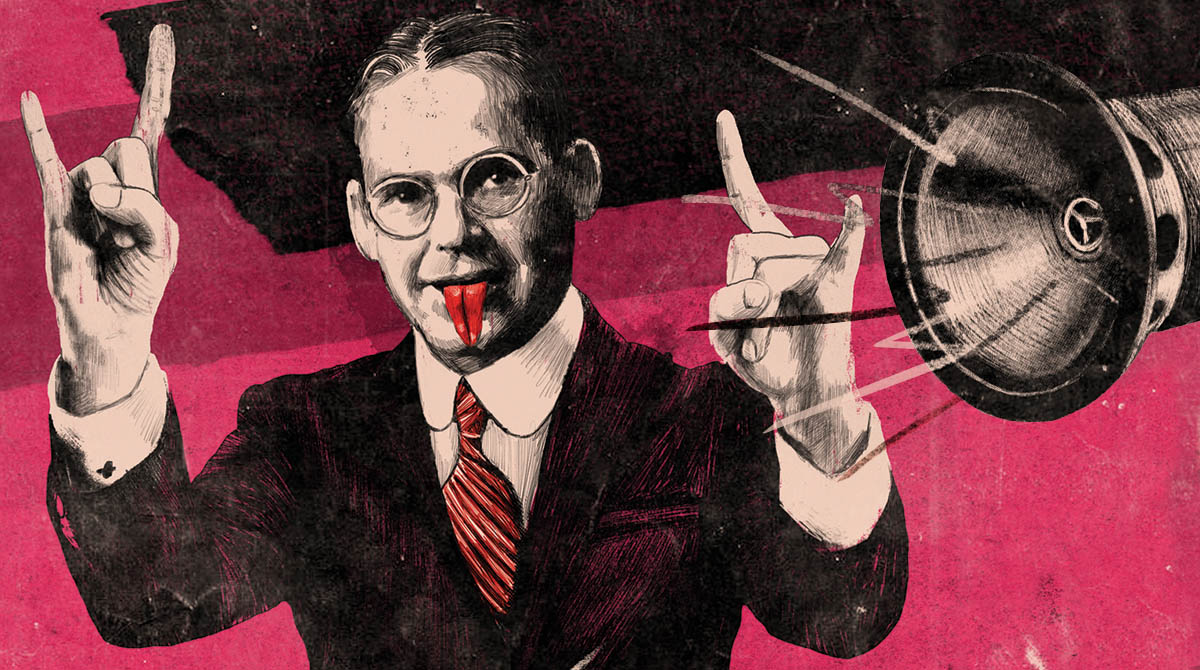
Chester W. Rice, like his father, was a gifted engineer and manager for the General Electric Corporation. In the 1920s, the younger Rice lived in Schenectady, New York, in a leafy, green part of town known as the GE Realty Plot — a cluster of three-story mansions owned by GE executives. Some of these homes had more than six fireplaces, while others had their own ballrooms. Chester Rice’s home had something far more practical, considering his job at GE: a fully equipped laboratory.
A large home lab suited the eccentric Rice well. He would start working at 11 or 12 o’clock at night and conduct complex experiments until dawn. In the nighttime peace and quiet of the GE Plot, he could use his ultra-sensitive electronic instruments undisturbed by activity on the street outside.
Chester Rice’s accomplishments were voluminous and covered many areas of electrical engineering. He developed short-wave radio technologies and designed one of the first submarine detection systems. He even tested an embryonic radar gun by measuring the speed of trolley cars. But arguably, his most important creation was the first really useful loudspeaker, which he developed with fellow GE engineer Edward W. Kellogg. Music would never be the same.
Getting Amped
Prior to Rice and Kellogg’s invention, the only practical way to really listen to a phonograph or a radio was to use headphones. If more than one person wanted to listen, a large acoustic horn was placed over a vibrating diaphragm, but this amplified the sound only minimally. So, in the early 1920s, Rice and Kellogg perfected the dynamic loudspeaker, in which an electronic amplifier boosted the signal from a radio or vibrations from a phonograph and then electromagnetically coupled those vibrations to a diaphragm that radiated sound directly. The new system easily filled a whole room with music.
Based on this work, RCA debuted their Radiola 104 “loud speaker” in 1926. It sold for about $250, which is well over $3,000 today. The public thought it well worth the money. Thousands of Radiola 104 speakers were sold.
Make Your Rice-Kellogg Moving Coil Loudspeaker
In this edition of Remaking History, we’ll craft a Maker-friendly version of Chester Rice’s dynamic loudspeaker (Figure A). The original Rice-Kellogg speaker used two electromagnets — one as the driver and one as the voice coil — but these days we use cheap permanent magnets for the drivers. Unlike the Radiola 104, our version costs about $15, or less if you happen to have a spool of magnet wire lying around. You’ll also need an amplifier and a music source.

How it Works
How does a loudspeaker make sounds?
Sounds travel through the air as waves. When you strike a drum with a stick, for example, the vibrating drumhead moves the air molecules surrounding it. These air molecules in turn push upon their neighbors, causing them to move also. In this way, a drumbeat moves outward from the drum as a pressure wave in the air, compressing the air molecules before it as it goes. But when the wave passes, the air molecules move back to their previous spacing, temporarily creating low-pressure regions. Sound waves are simply patterns of alternating high-pressure regions called compressions and low-pressure regions called rarefactions traveling through the air.
When the pressure wave reaches the ear, it pushes the eardrum inward and outward, and the middle ear’s nerves convert this vibration to electrical signals that your brain interprets as sound.
Like a drumhead, the vibrating diaphragm of your loudspeaker also causes waves of high and low pressure to travel through the air. But why does the diaphragm move? It’s glued to a magnetic coil positioned just in front of a permanent or field magnet. When you connect your speaker to a music amplifier, small pulses of electricity, which are shaped by the frequencies of the music, travel through the speaker wires into the coil, turning the coil into a variable electromagnet that produces a pulsing magnetic field. As the pulses flow, the electromagnet either attracts or repels the permanent magnet, vibrating the diaphragm to create sound — loud, room-filling, arena-filling sound.















